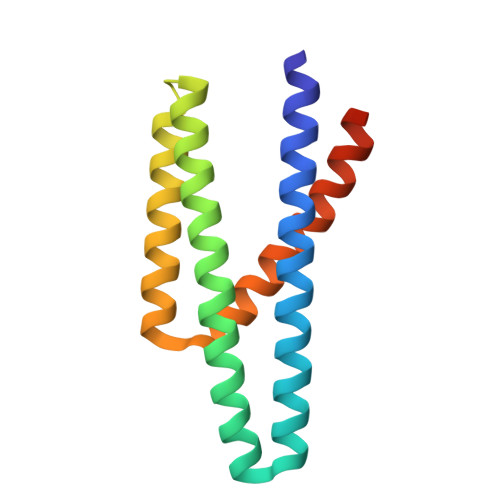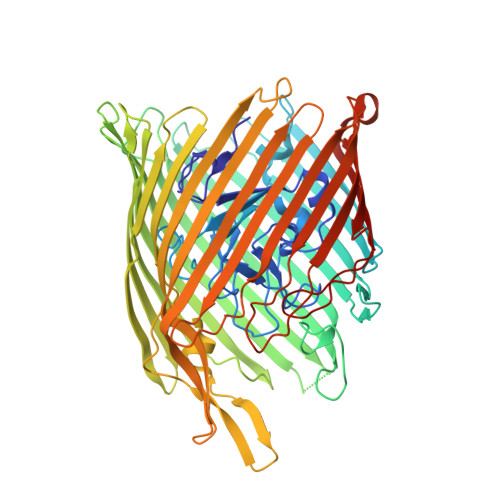Inhibiting heme piracy by pathogenic Escherichia coli using de novo-designed proteins.
Fox, D.R., Asadollahi, K., Samuels, I., Spicer, B.A., Kropp, A., Lupton, C.J., Lim, K., Wang, C., Venugopal, H., Dramicanin, M., Knott, G.J., Grinter, R.(2025) Nat Commun 16: 6066-6066
- PubMed: 40634285
- DOI: https://doi.org/10.1038/s41467-025-60612-9
- Primary Citation of Related Structures:
9DHE, 9DIR, 9DIS, 9DIV - PubMed Abstract:
Iron is an essential nutrient for most bacteria and is often growth-limiting during infection, due to the host sequestering free iron as part of the innate immune response. To obtain the iron required for growth, many bacterial pathogens encode transporters capable of extracting the iron-containing cofactor heme directly from host proteins. Pathogenic E. coli and Shigella spp. produce the outer membrane transporter ChuA, which binds host hemoglobin and extracts its heme cofactor, before importing heme into the cell. Heme extraction by ChuA is a dynamic process, with the transporter capable of rapidly extracting heme from hemoglobin in the absence of an external energy source, without forming a stable ChuA-hemoglobin complex. In this work, we utilise a combination of structural modelling, Cryo-EM, X-ray crystallography, mutagenesis, and phenotypic analysis to understand the mechanistic detail of this process. Based on this understanding we utilise artificial intelligence-based protein design to create binders capable of inhibiting E. coli growth by blocking hemoglobin binding to ChuA. By screening a limited number of these designs, we identify several binders that inhibit E. coli growth at low nanomolar concentrations, without experimental optimisation. We determine the structure of a subset of these binders, alone and in complex with ChuA, demonstrating that they closely match the computational design. This work demonstrates the utility of de novo-designed proteins for inhibiting bacterial nutrient uptake and uses a workflow that could be applied to integral membrane proteins in other organisms.
- Department of Microbiology, Biomedicine Discovery Institute, Monash University, Clayton, Australia.
Organizational Affiliation:

















